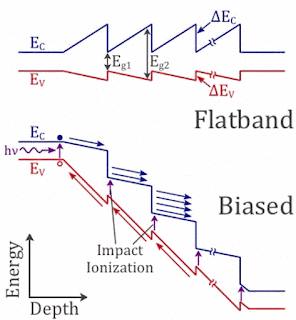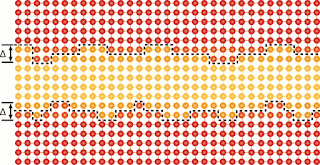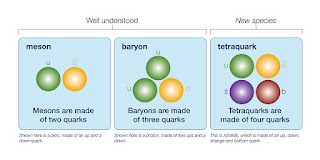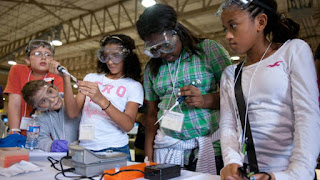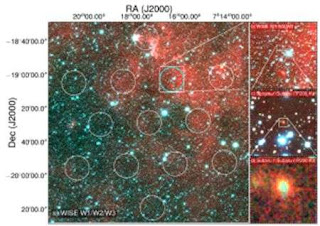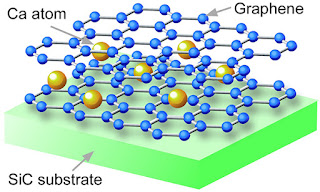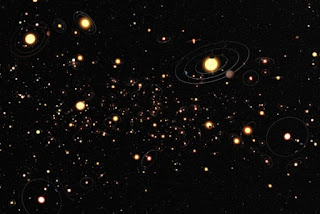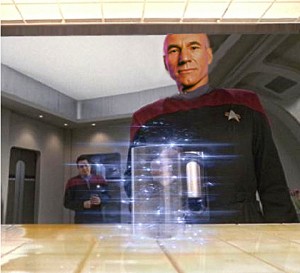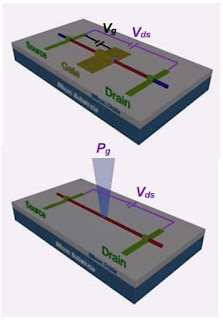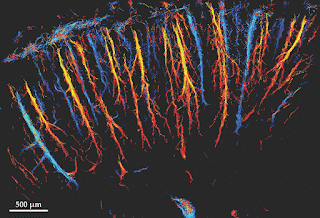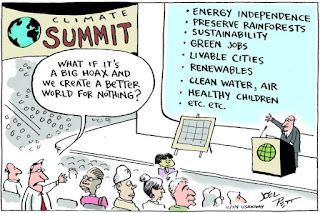 |
| Image Source: Good Reads |
Topics: Economy, Education, Large Hadron Collider, LHC, Particle Physics, Politics
I openly and severely date myself once again (the $2.95 cover a dead giveaway), all honor to Walt Kelly coining it the first Earth Day, April 22, 1970. Next month will mark the 46th year we've observed it as science and intelligence have receded from public life.
We're great "gadget consumers": we've just become piss-poor producers.
The Superconducting Supercollider was formally in Waxahatchie, Texas. It's a whole in the ground now. That Higgs Boson discovered at CERN was supposed to be found in the good old US of A.
I sum the current state of affairs with science and the general public in my best "Me Tarzan; you Jane" personification:
- Pseudoscience good;
- Real science BAD.
A primitive grunt, but a personification of the aftermath attacking the education enterprise in this country (vis-à-vis the lucrative teaching-to-the-test industry), and education's absolute necessity in running a democratic republic successfully. We've played chicken with conspiracy provocateurs, climate change deniers, Flat Earth groups, science deniers, vaccine deniers, Young Earth groups and the denial of human self-government itself. These "chickens have come home to roost" (Malcolm X).
Physics and Physicists* had a good blog entry last Friday on the Socio-Economic Impact of the LHC, based on an analysis posted in Physics arXiv (link below). It answers the question "what's in it for me" for Jane and Joe Q. Public, who have to "catch the vision" and support any research typically with their tax dollars, a far better and lasting investment than the boondoggle of sports stadiums.
Like "Zapper Z*" says (the particular physicist's online persona), it's like we don't care, or many of us have been exquisitely conditioned not to care.
Even worse, do we think modern society and its reliance on technology is a combination of fairies, pixie dust, microwave popcorn, three heel clicks of ruby red shoes to Kansas, and a genie with three wishes? It explains our current crisis of governance that one of the front runners seeking the nuclear codes has a LOT more in common with The Kardashians than we'd all care to admit.
..."and he is 'us.'"
Abstract
In this paper we develop a cost-benefit analysis of a major research infrastructure, the Large Hadron Collider (LHC), the highest-energy accelerator in the world, currently operating at CERN. We show that the evaluation of benefits can be made quantitative by estimating their welfare effects on different types of agents. Four classes of direct benefits are identified, according to the main social groups involved: (a) scientists; (b) students and young researchers; (c) firms in the procurement chain and other organizations; (d) the general public, including onsite and website visitors and other media users. These benefits are respectively related to the knowledge output of scientists; human capital formation; technological spillovers; and direct cultural effects for the general public. Welfare effects for taxpayers can also be estimated by the contingent valuation of the willingness to pay for a pure public good for which there is no specific direct use (i.e., as non-use value). Using a Monte Carlo approach, we estimate the conditional probability distribution of costs and benefits for the LHC from 1993 until its planned decommissioning in 2025, assuming a range of values for some critical stochastic variables. We conservatively estimate that there is around a 90% probability that benefits exceed costs, with an expected net present value of about 2.9 billion euro, not considering the unpredictable applications of scientific discovery.
Physics arXiv:
Massimo Florio, Stefano Forte, Emanuela Sirtori
Related links
Amazon.com: Anti-Intellectualism in American Life, Richard Hofstadter
Rational Wiki: Anti-Intellectualism
Wikipedia: Anti-Intellectualism
Psychology Today:
Anti-Intellectualism and the "Dumbing Down" of America, Ray Williams
Anti-Intellectualism is Killing America, David Niose

